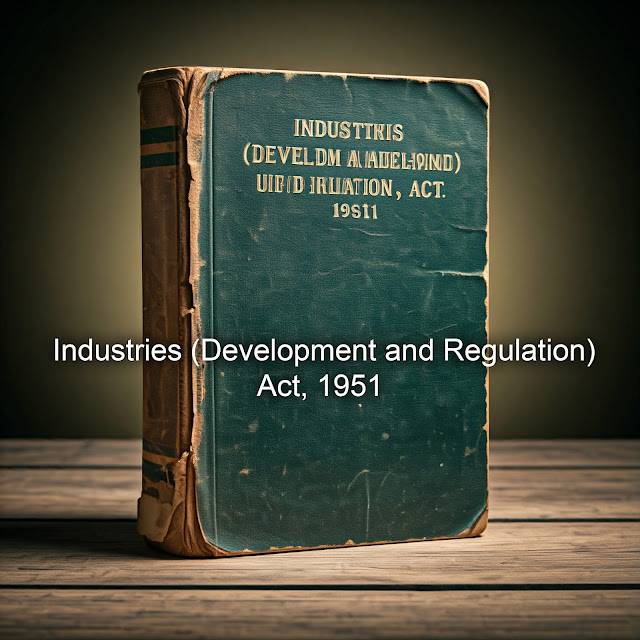The Industries (Development and Regulation) Act, 1951 was enacted to regulate and control the development of industries in India to ensure planned growth and industrialization. Here are the key features of the Act:
1. Regulation of Industrial Development
- The Act mandates the central government to take necessary steps for the regulation and development of industries.
- It aims to foster an organized growth of industries in India, prevent monopolies, and ensure a fair distribution of resources and production.
2. Licensing for Establishing Industries
- The Act introduced a licensing system for setting up new industries or expanding existing ones.
- No new industrial unit could be set up, or any substantial expansion could be undertaken without a license from the central government.
3. Schedule of Industries
- The Act classifies industries into Schedule I, listing industries that are subject to regulation and requiring prior government approval for establishment or expansion.
- Schedule I includes important sectors such as iron and steel, telecommunications, coal, cement, and fertilizers, among others.
4. Power of Central Government
- The central government was given authority to regulate the production, supply, and distribution of any article or class of articles related to any scheduled industry.
- It could take control of any industrial undertaking for public interest under certain circumstances.
5. Industrial Development Councils
- The Act provides for the establishment of Development Councils to advise the government on industrial policy and promote development in specific industries.
- These councils recommend measures for improving efficiency, quality of products, and employment opportunities in various industrial sectors.
6. Investigation into Industrial Undertakings
- The government has the power to investigate industrial undertakings that are being managed improperly or not meeting public interest needs.
- If an industry is found to be mismanaged, the central government can take over its control or recommend steps to improve its management.
7. Reservation for the Small-Scale Sector
- The Act also lays down provisions for promoting small-scale industries by reserving certain products or sectors for small-scale industries.
- This ensures that small industries can compete with larger players and maintain a fair share of the market.
8. Protection of Labor and Environment
- While primarily focused on industrial regulation, the Act also gives powers to the government to ensure that industries operate without causing harm to the environment or the workers.
9. Penalties for Non-compliance
- Non-compliance with the provisions of the Act, such as not obtaining licenses or violating regulations, can lead to penalties, including fines or imprisonment for responsible individuals.
10. Amendments and Evolution
- Over time, several amendments have been made to the Act to accommodate changes in industrial policy, liberalization, and privatization, especially after the economic reforms in 1991.
The Industries Act, 1951 played a significant role in shaping India's industrial landscape by promoting planned industrial development, ensuring balanced regional growth, and safeguarding the interests of the public and the economy.









0 Comments
Thanks for your feedback, i'll get back to you soon